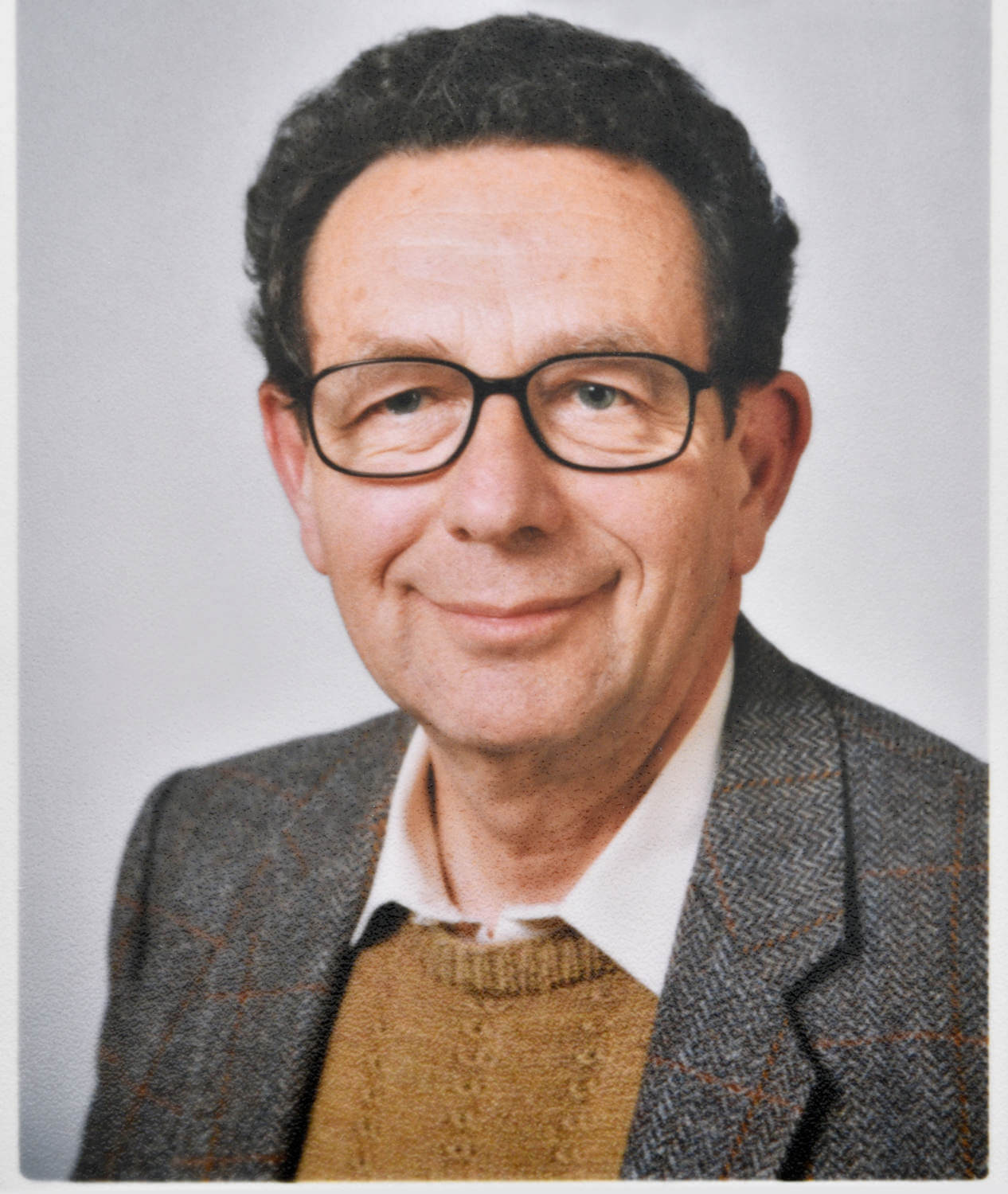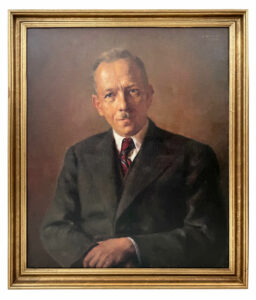Blaschegg, Dr. med. Max (1930-2021)
Collections narrate more than the history of civilizations; they also tell us about personal history. This applies to few collections more than the collection of Dr. Max Blaschegg, a friend of our company Leu Numismatik AG, who sadly passed away last December (2021). There is a certain consolation in the grief that the interesting biography and the lovable character of Dr. Blaschegg will live on in his numismatic life’s work – his articles on bracteates, but also the thousands of carefully designed coin flips are preserved for posterity and posthumously add another chapter to his own story. It was the collector’s express wish to have his coins returned to the numismatic circuit after his death through a Leu Numismatik Web Auction. This happened in our Web Auction 22 on 20-21 August 2022.
Max Blaschegg was born on 13 August 1930 in Linz, Austria, as the youngest of three children to Dr. Karl Blaschegg (1891-1951) and Wilhelmine Blaschegg (née Hainbucher, 1898-1981). As he stemmed from a family of doctors – his father, Karl, was a dentist, his grandfather a surgeon from Salzburg, he was encouraged to study medicine at an early age. Despite the love for history and numismatics which young Max developed during his time at the humanities-oriented gymnasium, he followed his father’s advice and pursued studies in medicine in Innsbruck and Vienna. As a trained doctor, with an additional specialization in dentistry, he moved to Switzerland in 1959, where he further specialized as a psychiatrist and psychotherapist at the Psychiatrische Klinik Oberwil/ZG and the Psychiatrische Universitätsklinik Zurich. After further stages at the departments of internal medicine and neurology at the Kantonspital Luzern, he returned to Oberwil as senior physician while also working in pediatric psychiatry. Early in 1977, he became senior physician in the newly founded Psychiatrische Klinik Hard in Embrach, where he built up the department for acute psychiatry. From 1988 till his retirement in 1995, he was active as chief psychiatrist-psychotherapist at the Psychiatrische Klinik Hohenegg in Meilen.
In 1972, he first met his future wife, Dr. med. Irma Honsalek, at work. Next to a shared professional interest, the couple Dr. Max Blaschegg and Dr. Irma Blaschegg-Honsalek were united in a shared love for history and art, classical music, and travel. In this way, his partner accompanied him to numerous numismatic conferences and lectures. In 1995, after a successful and fulfilling career, Dr. Max Blaschegg finally retired.
Throughout his life, Dr. Max Blaschegg had an interest in history, and he started delving into history in general and numismatics in particular early on. Two of his first coins, as his minute records show, were acquired at the age of twelve in 1942, namely two thalers from Bayern and Braunschweig (lot numbers 973 and 1045, respectively). From then onwards, a passion for coins would drive Dr. Max Blaschegg in the next (nearly) eight decades – first together with his father, Karl, and after the latter’s death in 1951, on his own – to build an extensive collection of several thousands of coins. Father and son divided their shared passion: Karl would focus on Roman and Habsburg coins, Max on Ancient Greece and Early Modern Germany.
After Dr. Karl Blaschegg passed away, his son inherited his collection and added it to his own. During the following years, Dr. Max Blaschegg would broaden his collecting area more and more: joining the old core of Germany and the Habsburg Empire were Byzantium, the Italian Middle Ages and Early Modern Period, and in particular bracteates. In this way, over many decades, a classic universal collection was formed, from Ancient Greece all the way down to the modern Euro. Roman sestertii, medieval bracteates, Siculo-Norman coinage, Italian Renaissance, Habsburg thalers, coins of the German Empire and from all over the European world, the collection forms a diversified overview of occidental numismatics. Perhaps even more remarkable is that for every single coin – whether it was a valuable ducat struck from Rhine gold or a simple 10 Eurocent coin – Dr. Blaschegg cut his own paper flips by hand, which he then carefully folded and glued, after which he would put a precise description of the coin on the front with his typewriter, while writing down the provenance on the backside of the flip. A man of many talents, he stored his coins with their self-made flips according to a meticulous sorting system in fifty wooden boxes which were hand-painted by him with thematically fitting motives.
Of special interest are the meticulously recorded provenances of the coins, as they reflect the diverse epochs of the history of numismatic trade over the past eight decades. During the War, from 1942 onwards, young Max Blaschegg acquired his early coins from Dorotheum in Vienna and O. Helbing in Munich. That the coin trade suffered no long-term disruption amidst the calamities of the Second World War is shown by further purchases from Dorotheum in Vienna from November 1945 onwards. After his move to Switzerland in 1959, Dr. Blaschegg quickly met Dr. F. Sternberg, whom he would visit once or twice a year from that point on and who advised him in his purchases over the next decades. Furthermore, Dr. Blaschegg regularly visited Switzerland’s coin fairs, where he purchased from numerous established dealers and auctions houses such as Münzen & Medaillen AG and Leu Numismatik. In later years, he would also add new pieces to his collection through international auctions, showing that, even at an advanced age, he would not close himself off from technical innovations such as the emerging online coin trade.
Dr. Max Blaschegg had a particular love for medieval bracteates and Pfenninge. Prof. H.-U. Geiger encouraged him to publish an extensive work in 2000 on the Freiherren of Krenkingen and their mint in Tiengen, followed by publications on the hoard of Wolsen containing Pfenninge from St. Gallen and on the Lilienpfennige from Strasburg. In addition, he had close contact with the Winterthurer Coin Cabinet, where he voluntarily worked on coin finds over the years, including the coin hoard of Winterthur-Haldengut.
The biography of Dr. Max Blaschegg would be incomplete if we did not mention his extensive social engagement as well. Over the years he supported charitable foundations such as Caritas, Doctors Without Borders, the Red Cross, PSR, WWF, Pro Natura and many other animal welfare and environmental organizations. His motto was to spend the same amount of money on such social projects as he did on numismatics. Modesty and a strong drive to help others marked his life, traits also expressing itself in his testament, in which Dr. Blaschegg stipulated that half of the gains from the sale of his collection, which he entrusted to Leu Numismatik AG shortly before his passing, would be donated to charity.
Dr. Max Blaschegg lived in Freienstein ZH, only about 20 minutes by car from our offices at Stadthaustrasse 143 in Winterthur. Every time he picked up coins from us, he would visit us in person, and he much enjoyed discussing his pieces and current topics with us. Even at a very advanced age, he would slowly, but determinedly, climb the stairs and greet our colleagues with his typical, friendly voice. Anecdotes about his exciting life always lifted our moods and brought alive for us the wealth of experience of an eyewitness of the past nine decades.
Dr. Max Blaschegg died on 9 December 2021 at the age of 91 after a long and fulfilled life. He was a passionate collector and an experienced numismatist, but above all, he was an exceptionally kind and helpful man. We will all miss Max Blaschegg dearly.
This article was first published in an auction catalog of auction house Leu Numismatik AG.








